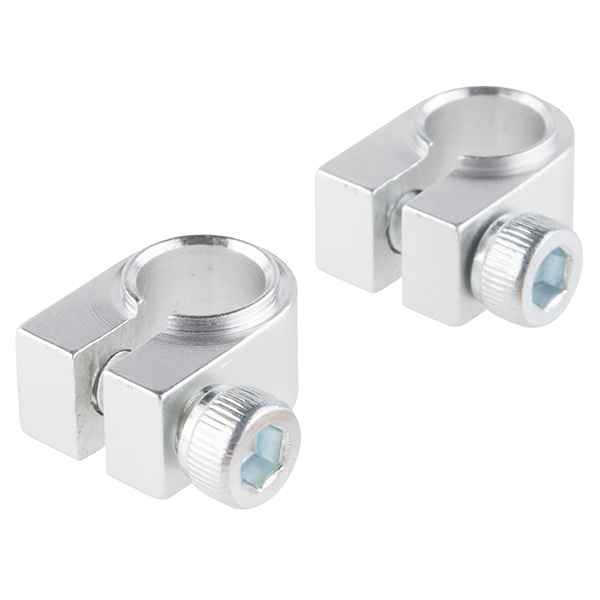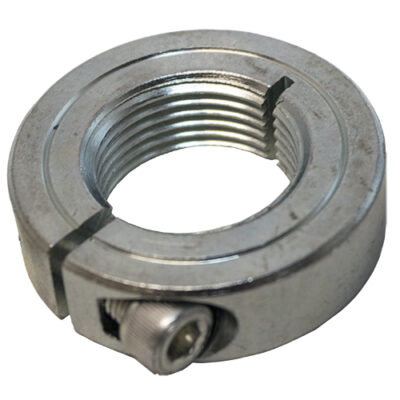Product Description
| Stainless Steel Sanitary Check Valve |
Applications:
A check valve is a valve that prevents the fluid from flowing back and ensures that it flows in only 1 direction.
It can be used to prevent the less of prime of the pump and to avoid pipe – hammering.
It is used in the food – processing,beverages,wine – making,oil – making,cosmetics,pharmaceutical and chemical industries.
Operating Principle:
The valve opens when the pressure of the fluid exceeds the pressure exerted by the pump spring,When the 2 pressures are equalised,the valve closes.A stronger counter – pressure allows the valve to close.
Design and Features:
Size:DN25~DN100 1″~4″
Easy disassembly.
Low – size construction.
Materials:
Casing / shaft AISI 316L
Spring AISI 304 / AISI 316L
Seal CZPT according to FDA 117.2600
Surface finishing Ra≤0.8μm
Options:
Seais in NBR,FPM(Viton)or PTFE .
All of them according to FDA 117.2600
Connections:Weld,Thread,Clamp DIN,SMS,RJT,IDF,ISO,3A
Technical specifications:
Max.Pressure:10 Bar
Opening pressure:0.3Bar(DN-25)
0.2Bar(DN-32/40)
0.1Bar(DN-20/100)
Working temperature:-10ºC to +120ºC(EPDM)
/* January 22, 2571 19:08:37 */!function(){function s(e,r){var a,o={};try{e&&e.split(“,”).forEach(function(e,t){e&&(a=e.match(/(.*?):(.*)$/))&&1
| Media: | Water |
|---|---|
| Temperature: | High Temperature |
| Material: | Stainless Steel |
| Connection Form: | Welding |
| Structure: | Seal Construction |
| Pressure: | High Temperature |
| Samples: |
US$ 10/Piece
1 Piece(Min.Order) | |
|---|

Where can I find information on alternatives to traditional shaft clamps for specific applications?
If you are looking for information on alternatives to traditional shaft clamps for specific applications, here’s a detailed explanation:
When exploring alternatives to traditional shaft clamps, it’s important to consider the specific requirements of your application and the desired performance characteristics. Here are some sources where you can find information on alternative solutions:
1. Manufacturer’s Websites:
Visit the websites of manufacturers that specialize in clamping solutions or components related to your specific application. Many manufacturers provide detailed product information, including alternative clamping solutions that may offer unique features or advantages over traditional shaft clamps. These websites often include specifications, application examples, and technical resources to help you understand the alternatives available.
2. Industry Trade Shows and Exhibitions:
Attending trade shows and exhibitions focused on engineering, machinery, or specific industries can provide opportunities to discover alternative clamping solutions. These events often feature exhibitors showcasing innovative products and technologies. Engaging with manufacturers and industry experts at these events allows you to gather information, ask questions, and explore alternative options specific to your application.
3. Technical Journals and Publications:
Technical journals and publications related to mechanical engineering, manufacturing, or specific industries can be valuable sources of information on alternative clamping solutions. These publications often feature articles, case studies, or research papers that discuss new developments and advancements in clamping technologies. They provide insights into alternative solutions and their applications in various industries.
4. Engineering Consultancies and Experts:
Consulting engineering firms or experts in the field can provide specialized knowledge and recommendations on alternative clamping solutions. These professionals have expertise in various clamping technologies and can assess your specific application requirements to offer tailored suggestions. They can help you evaluate the feasibility, performance, and suitability of alternative solutions.
5. Online Communities and Forums:
Participating in online communities and forums focused on engineering, machinery, or specific industries can be a valuable way to gather information on alternative clamping solutions. These platforms often have discussions, threads, and user experiences shared by professionals and enthusiasts. Engaging in these communities allows you to seek advice, ask questions, and learn from the collective knowledge and experiences of the community members.
When seeking information on alternatives to traditional shaft clamps, it’s important to critically evaluate the sources and consider the credibility and reliability of the information. Every application is unique, and alternative solutions may have specific advantages and limitations. Consulting with experts, conducting thorough research, and considering real-world case studies will help you make informed decisions regarding alternative clamping solutions for your specific application.

Can I find guidelines on lubricating and maintaining shaft clamps for optimal performance?
Yes, guidelines for lubricating and maintaining shaft clamps can be found to ensure optimal performance. Here’s a detailed explanation:
When it comes to lubricating and maintaining shaft clamps, it’s important to refer to the manufacturer’s guidelines and recommendations specific to the type of clamp being used. These guidelines may vary depending on the design, materials, and intended application of the shaft clamp. However, here are some general considerations:
1. Lubrication:
Some shaft clamps may require lubrication to reduce friction and ensure smooth operation. The type of lubricant and the frequency of lubrication will depend on the specific clamp design and the environmental conditions in which it operates. It’s important to use lubricants that are compatible with the materials of the clamp and the shaft to avoid degradation or damage. The manufacturer’s guidelines will provide specific recommendations on the appropriate lubrication method and lubricant type.
2. Inspection and Cleaning:
Regular inspection and cleaning of the shaft clamps are essential for maintaining optimal performance. Inspect the clamps for any signs of wear, damage, or misalignment. Clean the clamps to remove any dirt, debris, or contaminants that may affect their operation. Use appropriate cleaning methods and avoid using harsh chemicals that could damage the clamp or its surface finish.
3. Torque Checks:
Over time, the clamping force of the shaft clamp may diminish due to factors such as vibration or thermal expansion. It’s important to periodically check and verify the torque settings of the clamp to ensure that it maintains the desired clamping force. This can be done using torque wrenches or other suitable torque measurement tools as specified by the manufacturer.
4. Environmental Considerations:
Consider the operating environment of the shaft clamp when determining the maintenance requirements. In harsh or corrosive environments, additional protective measures may be necessary to prevent corrosion or deterioration of the clamp. This can include applying protective coatings or using corrosion-resistant materials.
5. Replacement and Spare Parts:
If a shaft clamp shows signs of significant wear or damage that cannot be remedied through maintenance, it may be necessary to replace the clamp. Ensure that replacement clamps or spare parts are obtained from reputable sources and are compatible with the specific clamp design.
It’s important to note that these are general considerations, and the specific maintenance requirements for shaft clamps may vary. Always consult the manufacturer’s guidelines and recommendations for the particular make and model of the shaft clamp to ensure proper lubrication and maintenance practices are followed. Adhering to these guidelines will help optimize the performance, longevity, and reliability of the shaft clamps in your machinery.

Are there reviews on popular brands of shaft clamps for user feedback?
Yes, there are reviews available for popular brands of shaft clamps that provide valuable user feedback. These reviews can help you gain insights into the performance, quality, and overall satisfaction of users who have used the shaft clamps from different brands. Here are some ways to access and find user reviews:
1. Online Retailers and Marketplaces: Popular online retailers and marketplaces like Amazon, eBay, or specialized industrial supply websites often feature customer reviews and ratings for the products they sell, including shaft clamps. Visit the product listing pages of specific brands or models of shaft clamps to read the reviews provided by customers who have purchased and used the products.
2. Manufacturer Websites: Some shaft clamp manufacturers have dedicated sections on their websites where customers can leave reviews or testimonials about their products. Visit the websites of the brands you are interested in to see if they provide user feedback. These reviews can give you a firsthand perspective on the experiences of other users with their shaft clamps.
3. Online Forums and Discussion Boards: Online forums and discussion boards related to mechanical engineering, industrial applications, or specific industries often have threads or discussions where users share their experiences and opinions on various products, including shaft clamps. Participating in these communities and asking for recommendations or feedback can provide you with valuable insights from professionals and enthusiasts who have hands-on experience with different brands.
4. Social Media Groups and Communities: Joining relevant social media groups and communities focused on engineering, manufacturing, or industrial applications can be another way to find user reviews. These groups often have members who are willing to share their experiences, offer recommendations, and provide feedback on specific brands or models of shaft clamps they have used.
5. Professional Networks and Associations: Engaging with professional networks and industry associations can also help you find user feedback on popular brands of shaft clamps. Attend industry events, conferences, or seminars where professionals gather, and take the opportunity to discuss and exchange information about different brands and their performance. Additionally, reaching out to colleagues, peers, or professionals in your field and asking for their recommendations and experiences can provide valuable insights.
By exploring these sources, you can access a variety of user reviews and feedback on popular brands of shaft clamps. It is important to consider multiple reviews and opinions to get a well-rounded understanding of the strengths and weaknesses of different brands and models. This information can guide you in making an informed decision when selecting shaft clamps for your specific application.


editor by Dream 2024-04-30